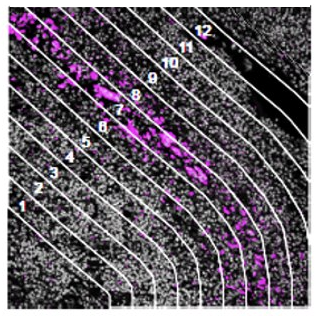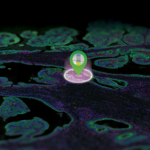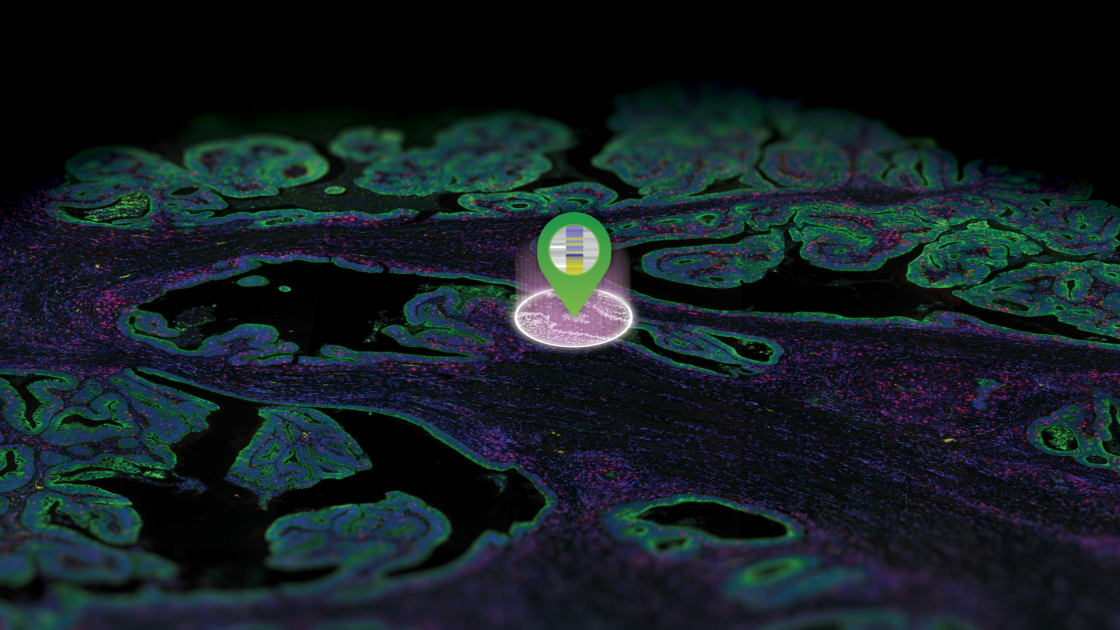
GeoMx® デジタル空間プロファイラー
GeoMx® DSP: 様々な解析とスループットに柔軟に対応できる空間プロファイリング プラットフォーム
GeoMx Digital Spatial Profiler(DSP)を使用して、組織の不均一性と微小環境の複雑さを迅速に解決しましょう。FFPEおよび新鮮凍結組織切片の解析に、最も柔軟で堅牢な空間マルチオミックスプラットフォームです。GeoMxは、異なる組織コンパートメントや細胞集団によるRNAおよびタンパク質の発現プロファイリングを非破壊的に行うことができ、さまざまなスループットに対応可能な自動ワークフローを標準的な組織染色と組み合わせた唯一の空間生物学プラットフォームです
組織を傷つけずに、全トランスクリプトームと570以上のタンパク質のプロファイリングを行えます
全トランスクリプトームと570以上のタンパク質のターゲットの空間プロファイリングを個別に、または1スライドで同時に行えます。全組織切片、組織マイクロアレイ(TMA)、オルガノイドなど、検体の種類は自由に選択できますので、バイオマーカー探索や仮説の検証に、ぜひGeoMx DSPをご活用ください。
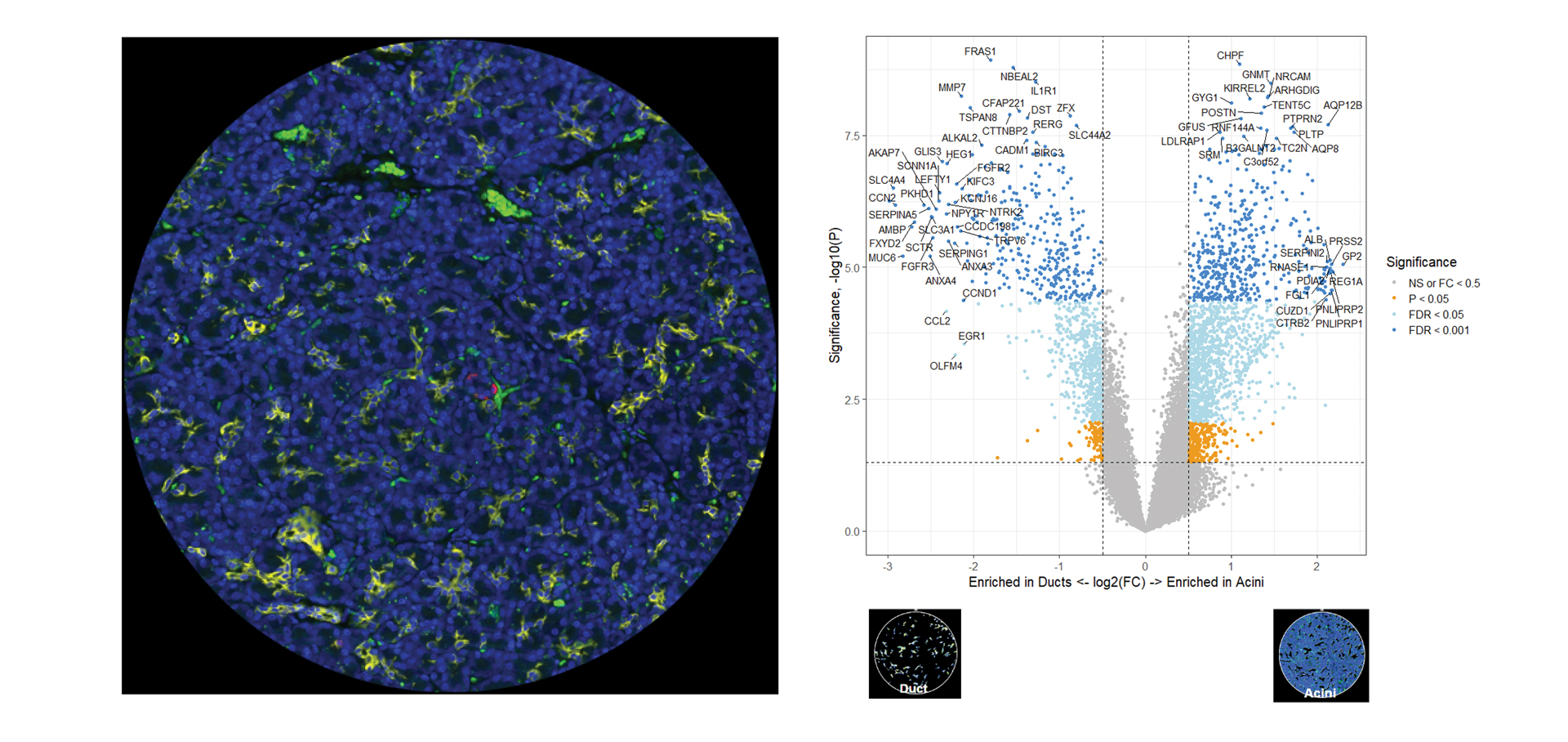
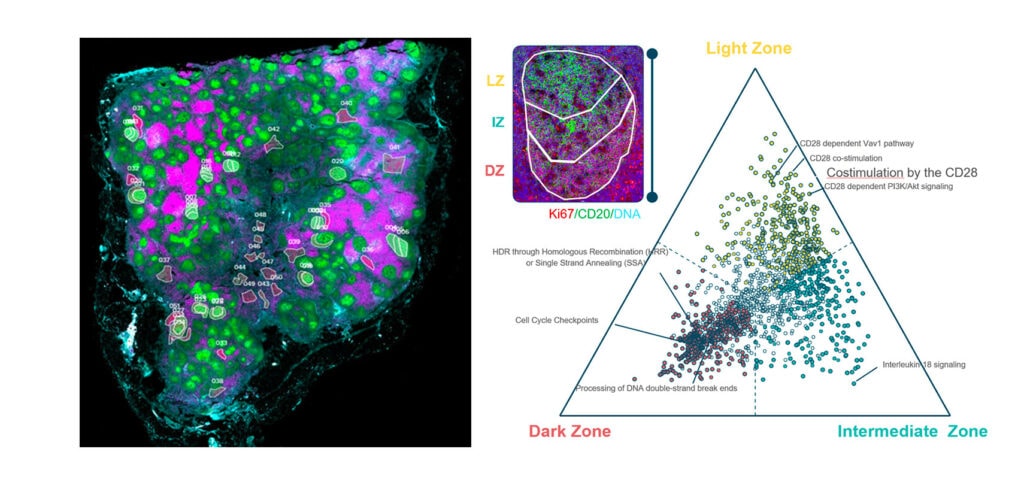
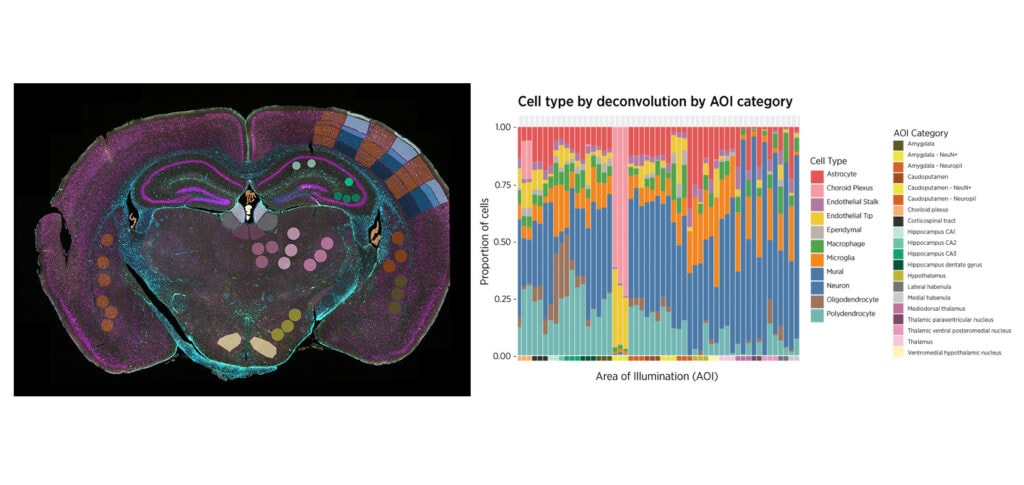
自分で選択した領域で、生物学に基づく
プロファイリングを行えます。
形態学的な指標からどこに線を引くかを自身で決めて組織をガイドにし、生物学に基づいたプロファイリングによって、最も重要な組織微小環境や細胞のタイプを選択します。プロファイル化する領域を選択し、各領域を異なるコンパートメントに分割し、蛍光染色パターンをマスクとして使用して、特定の組織タイプや細胞集団での発現をプロファイル化できます。
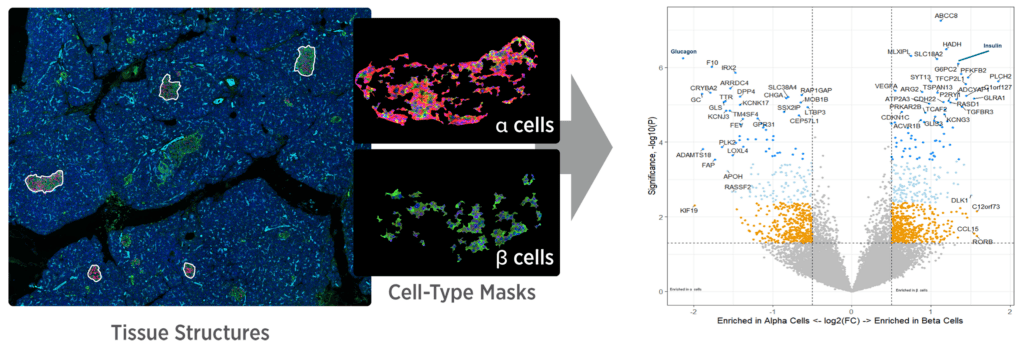
GeoMx DSPで何ができますか?
GeoMx DSPの利点
柔軟なプロファイリングで組織の不均一性を把握
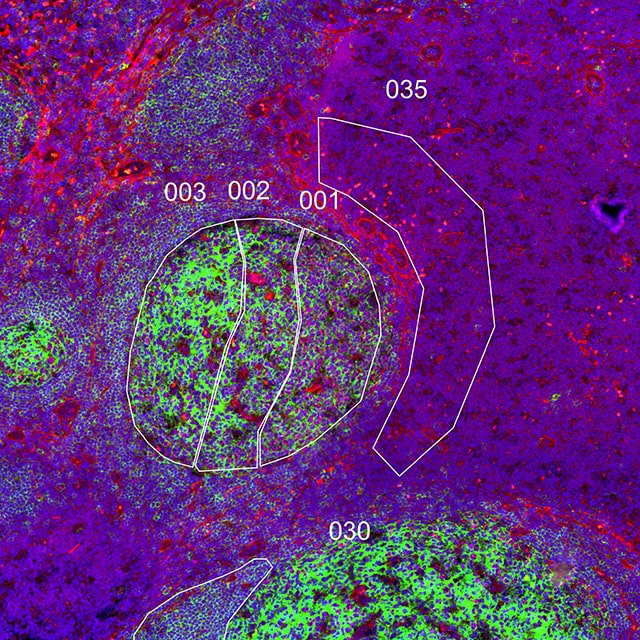
幾何学的プロファイリング
この検体組織の異なる領域における発現の違いは?
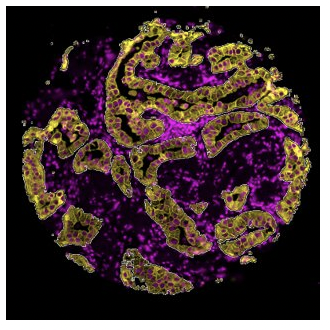
セグメント
生物学的に異なるコンパートメント(例: 腫瘍とその微小環境など)における発現プロファイルの違いは?
等高線
浸潤境界の両側で、免疫環境はどのように変化するのか?
プローブを利用した免疫染色では、5 logのダイナミックレンジで発現量の少ない物質、中程度の物質、多い物質を検出し、さまざまな質の組織に対応できます。
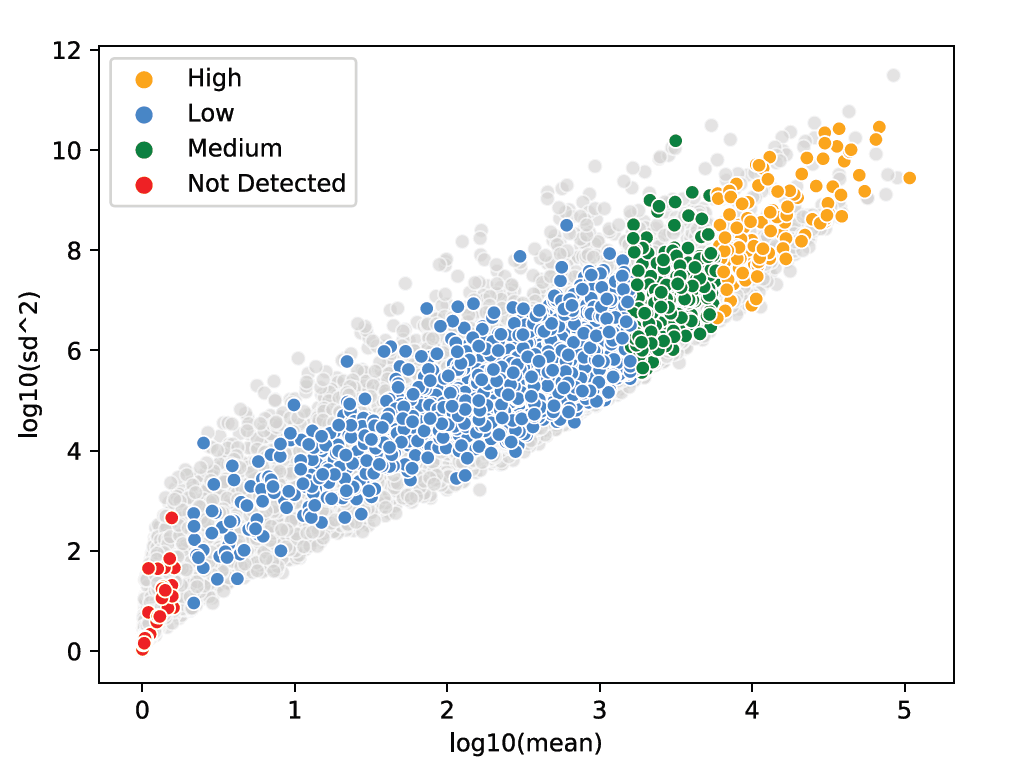
570以上のタンパク質と全トランスクリプトームの発現差異を空間的に分析しましょう。同じ1つの組織切片で解析することも、シリアル切片で解析することもできます。細胞の状態、シグナル伝達、生物学的経路を正確に把握することが、新たなバイオマーカー、薬剤の標的、薬剤の作用機序の発見につながります。
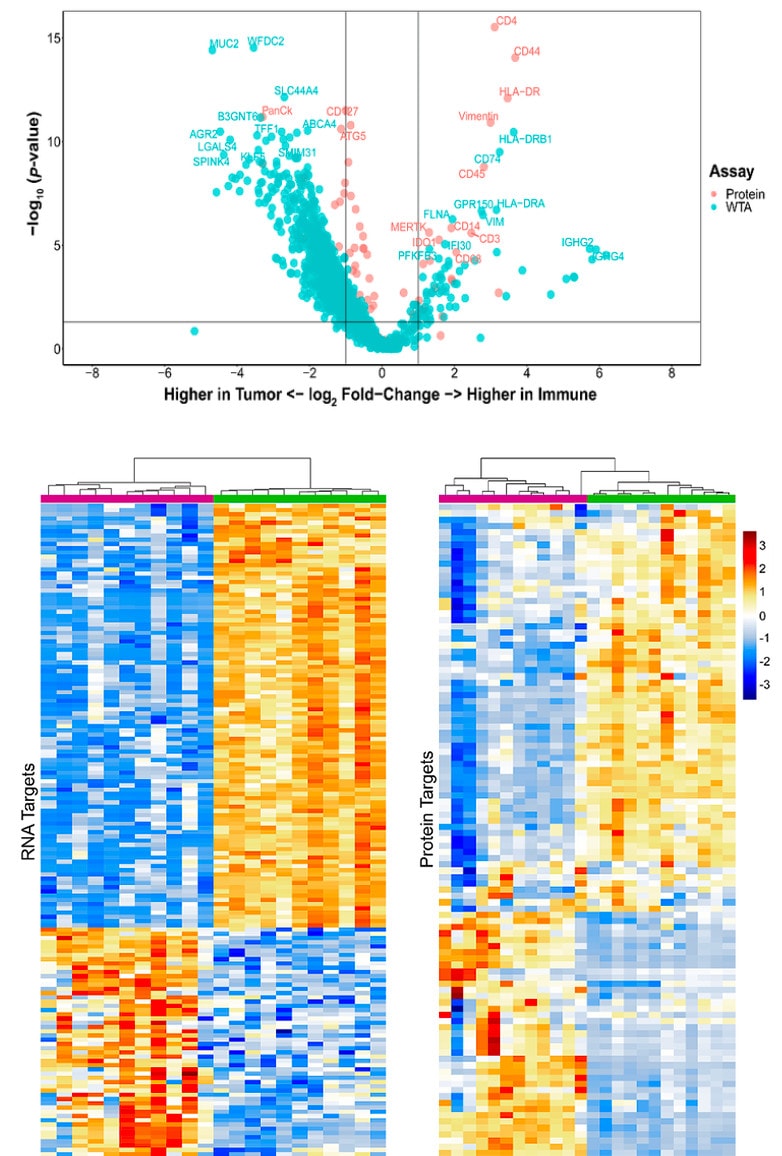
一貫した結果と信頼できる答えが得られる再現性のあるプラットフォームは、複数の実施医療機関で行われる大規模なコホート研究に最適です。
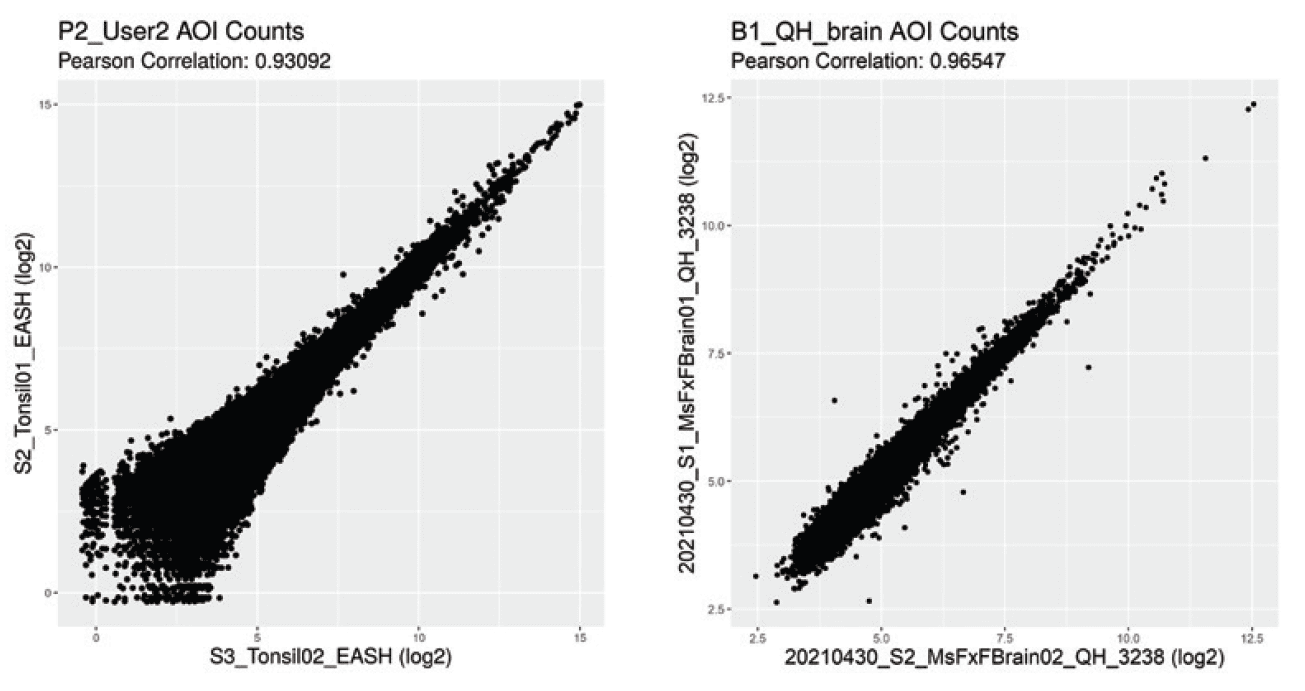
自動化も可能なワークフローを利用して、大規模なコホート研究に必要なスループットを実現できます。スキャンする領域を広く設定し、1枚のスライドに複数の組織検体を載せたり、組織マイクロアレイを用いたりすることで、スライド1枚あたりの検体数を多くします。ライカバイオシステムズ製の研究用全自動免疫染色装置BOND RXまたはBOND RXMを使用して、染色処理を自動化します。スライドをまとめて染色し、その後一緒に解析に供するまで冷蔵庫で保存しておきます。そのことによる結果への影響はありません。AI技術を利用したビジオファーマ製のデジタル病理画像解析ソフトウェアが関心領域(ROI)を設定する際の参考となります。監視を要することなく夜間も分析が行え、スループットは1週間に40枚に上ります。イルミナ社のシーケンシングプラットフォームやデータ解析パイプラインとともに使用することもできます。
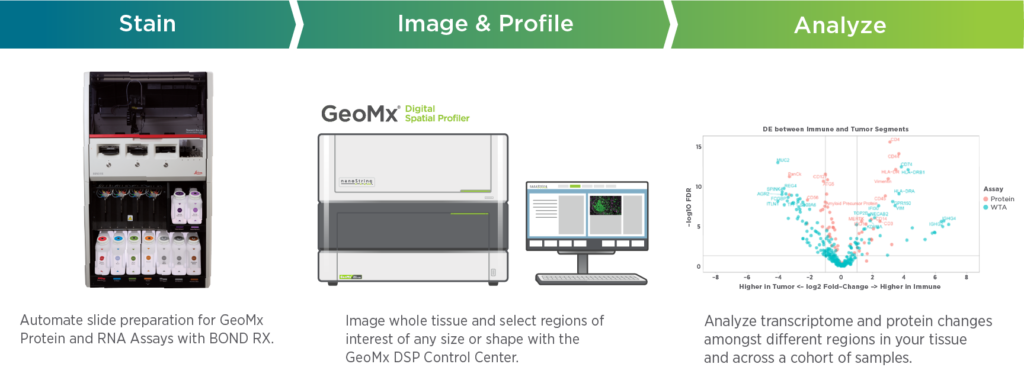
外来性のもの、内在性のもの、細菌性のもの、ウイルス性のもの、ヒト以外の動物種のものなど、RNAまたはタンパク質のターゲットのプローブを選択して追加することができます。弊社のGeoMx Barcodingサービスをご利用ください。NGSリードアウトを使用するアッセイに400以上のRNAターゲットを加えたり、それぞれが独立したRNAアッセイである最大200種類のターゲットを設定した2つのパネルを実行できます。NGSリードアウトを使用するタンパク質アッセイには最大40種類、nCounterリードアウトを使用するタンパク質アッセイには最大10種類の抗体を選択して加えることができます。
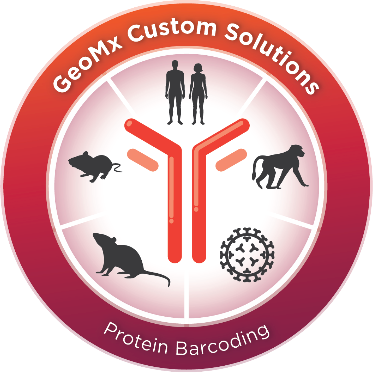
[/one_half]
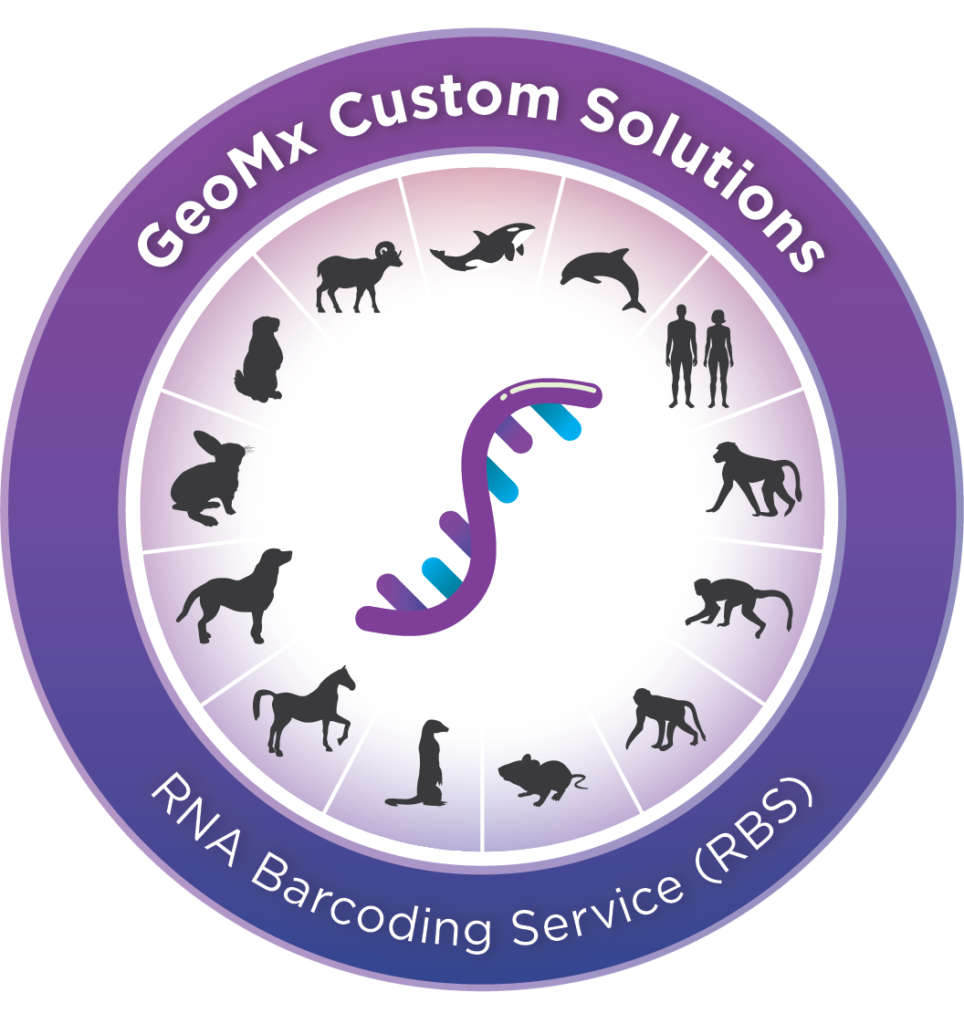

本製品でできること

DSPの抗体プローブまたはin situハイブリダイゼーション(ISH)プローブは、独自のオリゴヌクレオチドのバーコードで標識されており、紫外線を照射するとこのバーコードの結合が切断されます。

組織検査の標準的なワークフローに従い、蛍光標識を施したイメージング用プローブとアッセイ用プローブで組織検体を染色します。特別な封入操作は必要ありません。ライカバイオシステムズ製の研究用全自動免疫染色装置BOND RXまたはBOND RXmを使用すれば、検体の染色を自動化することもできます。

GeoMx DSPでは、10ミクロンの分解能によって、組織コンパートメントや細胞の種類を区別して選択できます。一連のマイクロミラーを使用して、指定されたマスキングの範囲にある組織のみに紫外線を照射します。マスキングの範囲は、近接していない複数の領域を指定することもできます。

組織のマスキングを行うことで、発現量の少ない物質、中程度の物質、多い物質について、より純粋な空間的発現情報が得られます。

GeoMx論文
Assessing Longitudinal Treatment Efficacies and Alterations in Molecular Markers Associated with Glutamatergic Signaling and Immune Checkpoint Inhibitors in a Spontaneous Melanoma Mouse Model
Previous work done by our laboratory described the use of an immunocompetent spontaneous melanoma-prone mouse model, TGS (TG-3/SKH-1), to evaluate treatment outcomes using inhibitors of glutamatergic signaling and immune checkpoint for 18 weeks. We showed a significant therapeutic efficacy with a notable sex-biased response in male mice.
Spatial transcriptomics reveals molecular dysfunction associated with cortical Lewy pathology
A key hallmark of Parkinson’s disease (PD) is Lewy pathology. Composed of α-synuclein, Lewy pathology is found both in dopaminergic neurons that modulate motor function, and cortical regions that control cognitive function.
Digital spatial profiling identifies molecular changes involved in development of colitis-associated colorectal cancer
Objective: Chronic colonic inflammation seen in inflammatory bowel disease (IBD) is a risk factor for colorectal cancer (CRC). Colitis-associated cancers (CAC) are molecularly different from sporadic CRC.
関連資料





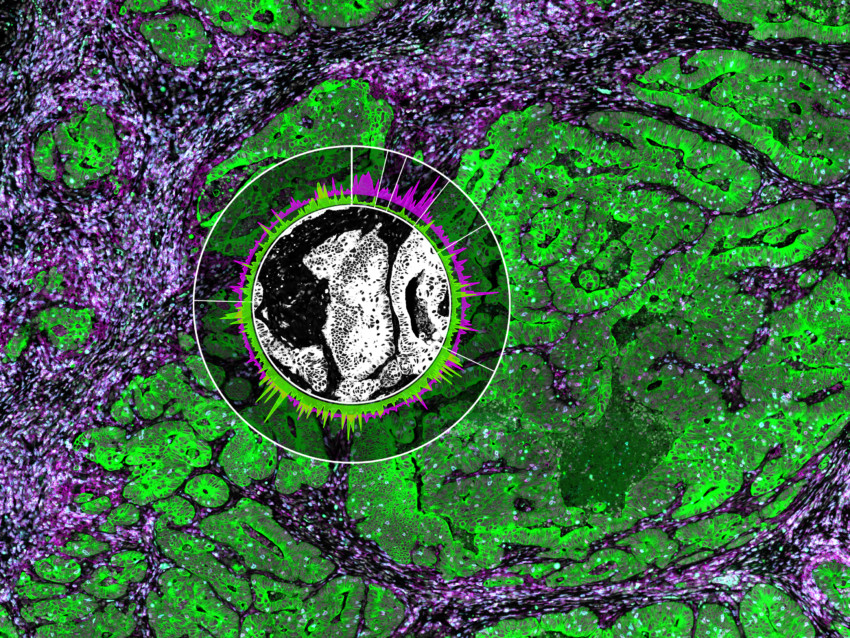
Request a Quote
Contact our helpful experts and we’ll be in touch soon.


